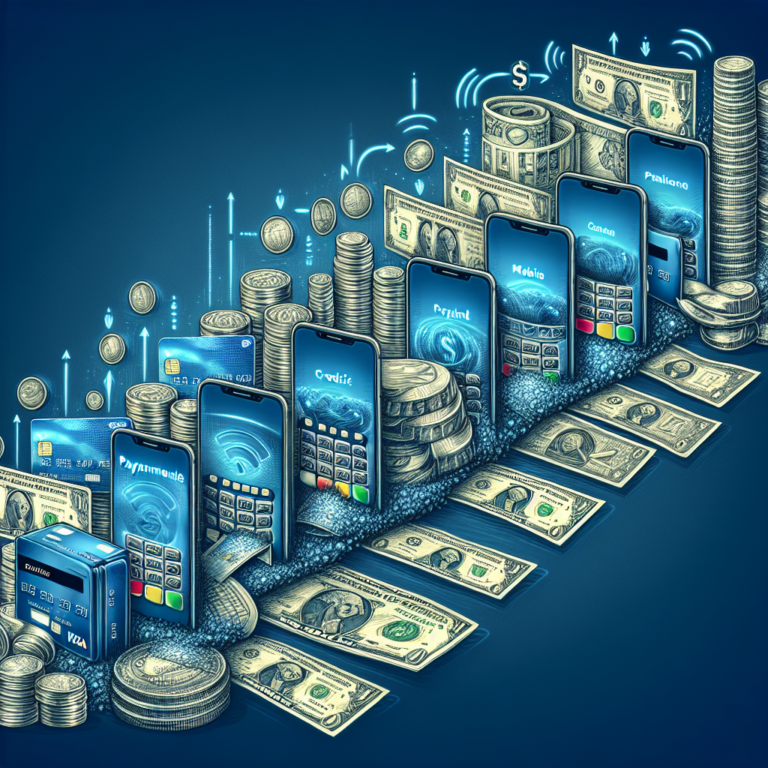In today’s digital age, the way we make payments has evolved significantly from traditional cash transactions to contactless payments. This evolution has been driven by advancements in technology, changing consumer preferences, and the need for more convenient and secure payment methods. In this blog, we will explore the journey of payment solutions from cash to contactless, highlighting key milestones and innovations along the way.
The Rise of Digital Payments
With the advent of the internet and mobile devices, digital payments have become increasingly popular in recent years. Online shopping, mobile banking, and digital wallets have revolutionized the way we make payments, making it easier and more convenient to transact without the need for physical cash.
Introduction of Credit and Debit Cards
One of the most significant milestones in the evolution of payment solutions was the introduction of credit and debit cards. These plastic cards allowed consumers to make purchases without carrying cash, providing a more secure and convenient alternative to traditional payment methods.
Emergence of Mobile Payments
Mobile payments have further transformed the payment landscape, allowing consumers to make transactions using their smartphones or wearable devices. Services like Apple Pay, Google Pay, and Samsung Pay enable users to pay for goods and services with a simple tap or wave of their device, eliminating the need for physical cards or cash.
The Transition to Contactless Payments
As technology continues to advance, contactless payments have emerged as the next evolution in payment solutions. Contactless technology allows consumers to make transactions by simply tapping their card or mobile device on a contactless-enabled terminal, making the payment process faster and more convenient.
Benefits of Contactless Payments
Contactless payments offer several benefits over traditional payment methods, including speed, convenience, and enhanced security. With contactless transactions, customers can make payments quickly and easily, reducing wait times at checkout lines and improving overall shopping experiences.
Security of Contactless Payments
Contrary to popular belief, contactless payments are actually more secure than traditional card payments. Contactless transactions use encrypted data that is unique to each transaction, making it more difficult for fraudsters to steal sensitive information. Additionally, contactless cards and devices have built-in security features, such as tokenization and biometric authentication, to protect against unauthorized use.
Future Trends in Payment Solutions
Looking ahead, the future of payment solutions is likely to be driven by innovations in biometric authentication, blockchain technology, and artificial intelligence. Biometric payment methods, such as fingerprint scanning and facial recognition, are already being integrated into payment systems to enhance security and streamline the authentication process.
Integration of Blockchain and Cryptocurrency
Blockchain technology and cryptocurrency are also poised to disrupt the payment industry, offering faster, more secure, and cost-effective alternatives to traditional payment methods. With blockchain, transactions are recorded on a decentralized ledger, reducing the risk of fraud and eliminating the need for intermediaries in the payment process.
Advancements in Artificial Intelligence
Artificial intelligence (AI) is another key trend shaping the future of payment solutions. AI-powered chatbots and virtual assistants are being used to provide personalized customer support and streamline the payment process. Machine learning algorithms can also detect and prevent fraudulent transactions in real-time, enhancing security and reducing the risk of financial loss.
FAQs
What are contactless payments?
Contactless payments are a form of payment that allows consumers to make transactions by tapping their card or mobile device on a contactless-enabled terminal. This technology uses radio frequency identification (RFID) or near-field communication (NFC) to securely transmit payment information between the card or device and the terminal.
Are contactless payments secure?
Yes, contactless payments are secure and even more secure than traditional card payments. Contactless transactions use encrypted data that is unique to each transaction, making it more difficult for fraudsters to steal sensitive information. Additionally, contactless cards and devices have built-in security features, such as tokenization and biometric authentication, to protect against unauthorized use.
What are the benefits of contactless payments?
Contactless payments offer several benefits over traditional payment methods, including speed, convenience, and enhanced security. With contactless transactions, customers can make payments quickly and easily, reducing wait times at checkout lines and improving overall shopping experiences.
